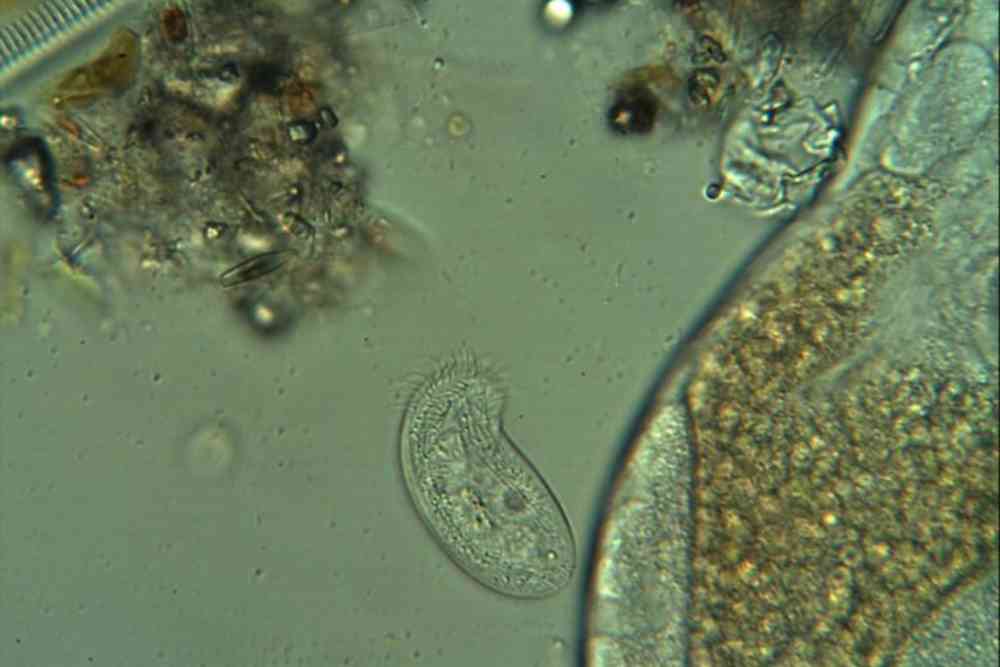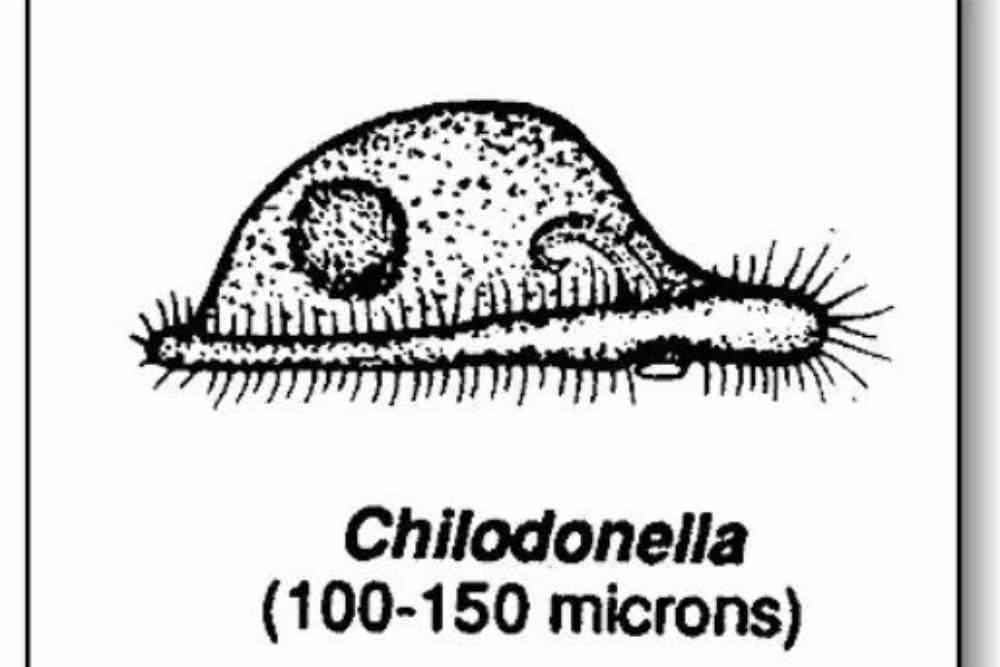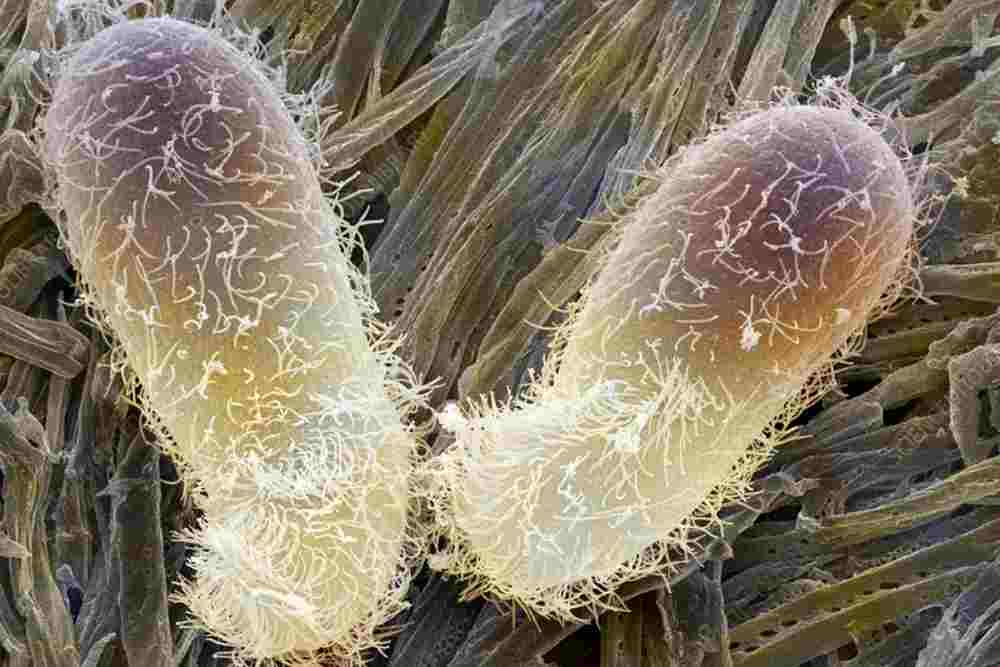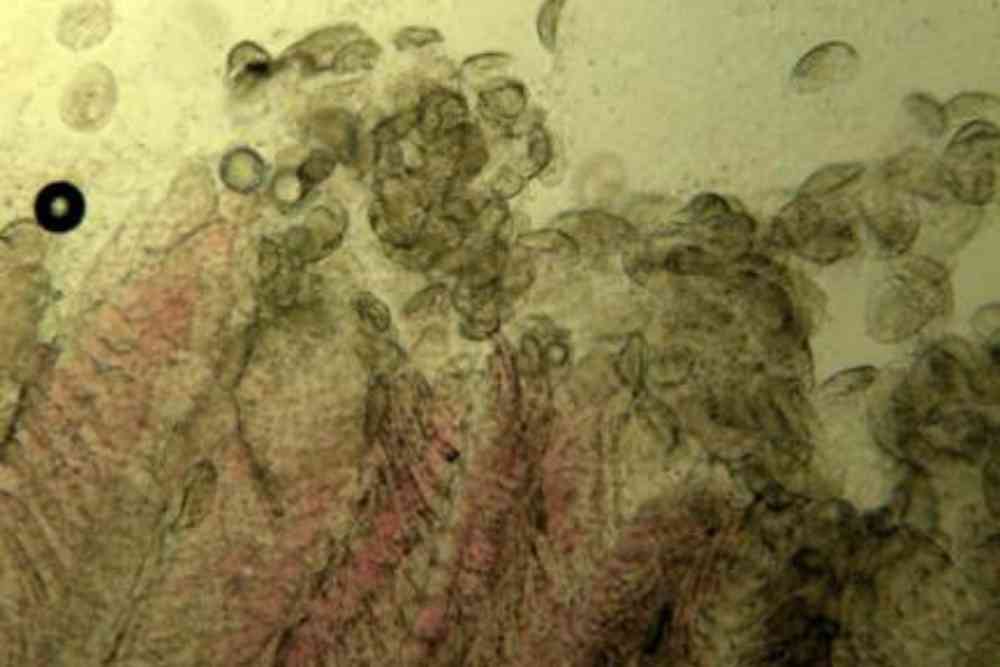Chilodonella is a single-celled protozoan parasite that can cause serious health problems in fish. It is most commonly found in aquariums and ponds, and can quickly spread to affect entire populations of fish.
More than two thirds of the world’s aquaculture production comes from the rearing of freshwater fish.
This article will provide an overview of Chilodonella on fish, including what causes it, the symptoms to look out for and how to treat it.

Causative agent
One of the main reasons for productivity loss in freshwater farmed fish is parasitic ciliates, with species from the genus Chilodonella being particularly troublesome.
While though Chilodonella species comprise “free-living” fauna, some of them are also responsible for fish mortality, especially in high-density aquaculture.
This coloured scanning electron micrograph (SEM) shows Chilodonella, a type of ciliate protozoa that can be found in freshwater environments.
So, what is the morphology & features of Chilodonella?
These minuscule single-celled organisms have primitive mouths, called buccal cavities, which they use to filter bacteria and decaying organic matter using membranelles.

The membranelles, made up of fused rows of cilia, not only aid in feeding but also in the organism’s movement.
These single-celled oval ciliate endoparasites found on gills and skins size ranged from 100-150 (µm).
At least 16 species of freshwater fish are raised in 14 different countries, and infections with Chilodonella spp. significantly reduce their ability to produce freshwater.
Chilodonella parasites feed on fish skin mucus and gill substrate (bacteria and organic material) using the cytostome, which makes the host’s immune system inflame.
Different Chilodonella Species are,
- Chilodonella hexasticha
- Chilodonella piscicola
- Chilodonella unicata
- Chilodonella bengalensis

How Do Fish Get Chilodonella?
There are several causes of Chilodonella in fish tanks, including:
Poor Water Quality: Chilodonella thrives in dirty, unfiltered, or overcrowded aquariums with high levels of organic waste, ammonia, and nitrites.
Stress: Stressed fish are more susceptible to Chilodonella infections. Stressful conditions can arise from overcrowding, inadequate filtration, low oxygen levels, or sudden changes in water temperature or pH.
Introduction of Infected Fish: Adding new fish to a tank without proper quarantine procedures can introduce Chilodonella and other pathogens to the tank.
Contaminated Equipment: Equipment such as nets, decorations, or plants that have been in contact with infected fish or water can also spread Chilodonella to healthy fish.
Poor Nutrition: Malnourished fish with weakened immune systems are more likely to contract Chilodonella and other diseases. Providing a balanced and nutritious diet can help prevent infections.
Signs & Symptoms of Chilodonella Infected Fish
Chilodonella contamination involved with a lot of clinical signs:
-Loss of appetite, lethargy and scratching against aquarium decoration.
–The most common clinical signs include a mottled or grey appearance on the skin (caused by an excessive amount of mucus production).
-Production of viscous mucus in the gills, swimming slowly near the surface and along the edges, and occasionally gill lesions and scale loss.

–Acute gill lesions sufficient to cause the death of affected fish are typically present with severe parasite infections.
-Necrosis and some minor oedema can also be seen.
-Gill epithelial hypertrophy and hyperplasia are caused by Chilodonella spp. infestations, which are typically accompanied by full or partial lamellar fusion and lymphocytic infiltration.
-Fish skin typically exhibits a non-specific lymphocytic dermatitis.
Diagnosis of Chilodonella parasite
Chilodonella are extremely small, and they can be difficult to identify and enumerate without the aid of a powerful microscope. Multiple water samples should be look at, as well as skin scrapings from fish at suspected attachment sites.
Prevention from Chilodonella
• Quarantine new fish.
• Improves Water Quality.
• Perform a 10% water changes daily and 20-25% water changes weekly.
• Provide a good nutritional diet.
How Do You Treat Chilodonella in Fish?
The use of medications to treat chilodonellosis in fish is not very effective, and effective biosecurity measures have been shown to produce better results.
–Salt bath-0.5 (one hour); 1.5 (thirty minutes); 2.5 (15 minutes). Sodium chloride works as a dehydrating agent that causes parasites to separate from their victims and perish. Potassium Permanganate (KMnO4) dip.
-Formalin dip- The most effective poison against Chilodonella is having malachite green mixed with formalin. (0.05 ppm or 5mL per 10 gallons of water).
–Potassium permanganate is another substance used to treat infections brought on by Chilodonella spp (KMnO4).
FAQs
Where is Chilodonella from?
Chilodonella is a genus of ciliate protozoan that is found worldwide in a variety of aquatic environments, including freshwater, saltwater, and brackish water.
Chilodonella has been documented in both natural bodies of water, such as rivers, lakes, and oceans, and in artificial environments such as aquariums, fish farms, and koi ponds.
Chilodonella is believed to be native to many different regions and is likely a ubiquitous organism in aquatic ecosystems.
The protozoan has been identified in different parts of the world, including North America, Europe, Asia, and Australia.
Chilodonella can infect a wide range of fish species, including koi, goldfish, tilapia, trout, and salmon, among others.
It is an opportunistic pathogen, meaning it can infect fish that are stressed, weakened, or otherwise compromised, making it essential to maintain good water quality and fish health to prevent infections.
What is Chilodonella in Koi?
Chilodonella is a type of parasitic protozoan that can infect koi and other fish. Chilodonella typically infects the skin and gills of koi, causing irritation, inflammation, and damage to the fish’s tissues.
Infected fish may exhibit symptoms such as lethargy, loss of appetite, gasping for air at the surface of the water, flashing or rubbing against objects, and skin and gill irritation.
How does Chilodonella move?
Chilodonella is a type of ciliate protozoan that has a unique mode of movement.
It moves using hair-like structures called cilia that cover its entire body. These cilia beat in coordinated waves, propelling the organism through the water in a swimming motion.
Chilodonella can move quickly and efficiently through the water, allowing it to locate and attach to its host fish.
Once it has attached to the fish, it can feed on its host’s body fluids, causing damage to the fish’s skin, gills, and other tissues.
Chilodonella can also move between fish and from one location to another within an aquarium through the water or by attaching to contaminated equipment or other surfaces.
References
- Abdel-Baki, A. A. S., & Al-Quraishy, S. (2014). First record of Chilodonella spp.(Ciliophora: Chilodonellidae) in cultured Nile tilapia (Oreochromis niloticus) in the central region of Saudi Arabia. Pakistan Journal of Zoology, 46(3).
- Wang, Z., Zhou, T., Yang, H., & Gu, Z. (2019). First diagnosis of ectoparasitic ciliates (Trichodina and Chilodonella) on farmed juvenile yellow catfish, Tachysurus fulvidraco in China. Aquaculture Research, 50(11), 3275-3285.